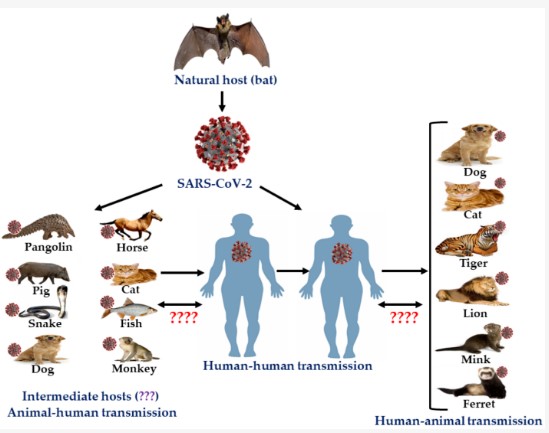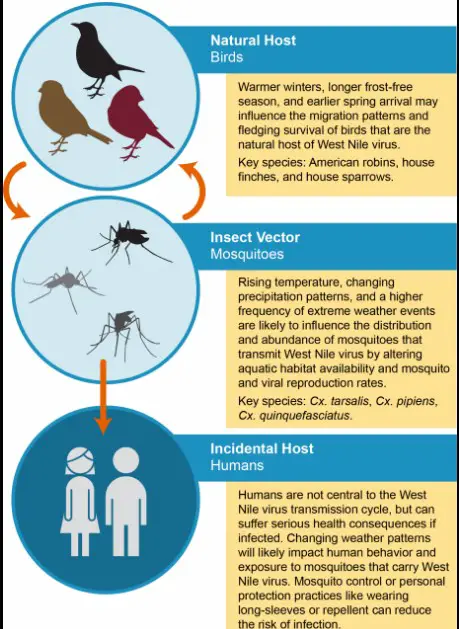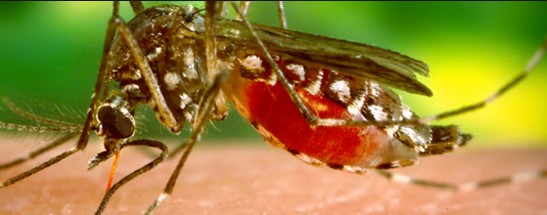Infectious diseases have long been a pivotal concern for public health across the globe. They emerge from various sources and affect humans in multiple ways, posing significant challenges to healthcare systems. Among these, zoonotic and vector-borne diseases stand out due to their unique modes of transmission and impact on populations.
Zoonotic diseases are infections that are naturally transmissible from vertebrate animals to humans, while vector-borne diseases are transmitted by vectors such as mosquitoes, ticks, and fleas. These diseases not only reflect a complex interplay between human, animal, and environmental health but also highlight the critical need for integrated approaches to disease management and prevention.
The significance of distinguishing between zoonotic and vector-borne diseases lies in their prevention and control strategies. Understanding their transmission dynamics, vectors involved, and the interconnection with ecosystem changes is crucial for developing effective public health interventions. As the world grapples with emerging infectious diseases, the knowledge of these distinctions becomes ever more important for safeguarding global health.

Zoonotic Diseases
Definition
Zoonotic diseases are infections that naturally move from animals, especially vertebrates, to humans. These diseases can be caused by viruses, bacteria, parasites, and fungi. The process underscores a direct link between our health and how we interact with other living creatures.
Transmission
Transmission of zoonotic diseases to humans occurs through various channels:
- Direct contact: Handling animals, their waste, or consuming animal products can lead to direct transmission.
- Indirect contact: Coming into contact with areas where animals live and roam, or consuming food and water contaminated with diseases.
- Vector-borne: Bites from mosquitoes, ticks, or fleas can transmit certain zoonotic diseases.
- Foodborne: Consuming undercooked meat or contaminated fruits and vegetables can cause infections.
Examples
Several well-known diseases fall under the category of zoonotic diseases:
- Rabies: Transmitted through animal bites, especially dogs.
- Lyme disease: Spread by tick bites.
- Salmonellosis: Caused by consuming contaminated food products.
- Avian influenza: Transmitted from birds to humans, often through direct or indirect contact.
Prevention
Preventing zoonotic diseases involves several straightforward steps:
- Personal hygiene: Regular hand washing after handling animals or coming into contact with their environments.
- Safe food practices: Properly cooking meat and washing fruits and vegetables.
- Vector control: Using insect repellent and wearing protective clothing to avoid bites.
- Vaccinations: For pets and livestock to prevent diseases from spreading to humans.
Vector-Borne Diseases
Definition
Vector-borne diseases are infections transmitted by vectors like mosquitoes, ticks, and fleas. These vectors carry infectious pathogens from one host (usually animals) to humans. The diseases are a significant concern for public health globally.
Vectors Involved
Key vectors include:
- Mosquitoes: Transmit diseases such as malaria, dengue, and Zika virus.
- Ticks: Responsible for spreading Lyme disease and Rocky Mountain spotted fever.
- Fleas: Can transmit plague from small animals to humans.
Examples
Prominent vector-borne diseases include:
- Malaria: Caused by Plasmodium parasites, transmitted by Anopheles mosquitoes.
- Dengue Fever: Spread by Aedes mosquitoes.
- West Nile Virus: Transmitted to humans through bites from infected mosquitoes.
Prevention
To reduce the transmission of vector-borne diseases, follow these methods:
- Eliminate breeding sites: Reducing standing water to limit mosquito breeding.
- Use of insect repellents: Applying repellents on exposed skin and clothing.
- Protective clothing: Wearing long sleeves and pants in areas with high vector populations.
- Window and door screens: Installing screens to prevent vectors from entering homes.
Key Differences
Transmission Methods
While both zoonotic and vector-borne diseases are caused by pathogens, their transmission methods differ significantly. Zoonotic diseases often involve direct or indirect contact with animals or their environments. In contrast, vector-borne diseases rely on a vector for transmission from animals to humans.
Impact on Humans
The impact of these diseases on human populations also varies. Zoonotic diseases can emerge from interactions with a wide range of animals and in diverse settings, from wild areas to farms and homes. Vector-borne diseases, however, are more closely linked to specific vectors and their habitats, which can be influenced by environmental factors like climate change.
Control Measures
Control measures for these diseases require different approaches. Zoonotic disease prevention focuses on reducing human-animal interaction and enhancing food safety. Vector-borne disease control, on the other hand, targets the vectors themselves through measures like habitat reduction, insecticides, and personal protective actions.

Challenges in Management
Diagnosis Challenges
Identifying and diagnosing zoonotic and vector-borne diseases pose significant challenges for healthcare systems worldwide. These challenges stem from several factors:
- Symptom Overlap: Many zoonotic and vector-borne diseases share symptoms with more common illnesses, making initial diagnosis difficult.
- Limited Awareness: In regions where these diseases are less common, there may be a lack of awareness among healthcare providers.
- Diagnostic Tools: The availability of diagnostic tools is often limited, especially in low-resource settings. Additionally, some tests require specialized equipment or are too expensive for routine use.
These issues highlight the need for enhanced diagnostic capabilities, including rapid and accurate tests that can be deployed in a variety of settings.
Treatment Difficulties
Treating zoonotic and vector-borne diseases comes with its own set of complexities:
- Drug Resistance: The emergence of drug-resistant strains of pathogens, such as malaria-resistant Plasmodium, complicates treatment efforts.
- Treatment Access: Access to effective treatments can be limited, especially in underdeveloped regions where these diseases are most prevalent.
- Complex Treatment Regimens: Some diseases require long-term treatment plans, which can be difficult to adhere to and manage.
Improving treatment strategies requires ongoing research into new medications and treatment protocols, along with efforts to increase access to healthcare services globally.
Global Health Impact
Zoonotic and vector-borne diseases significantly affect global health, contributing to morbidity and mortality worldwide:
- Disease Burden: These diseases account for a substantial portion of the infectious disease burden, particularly in tropical and subtropical regions.
- Economic Impact: Outbreaks can have severe economic consequences, affecting livelihoods, food security, and economies at large.
- Health Systems: Epidemics strain health systems, diverting resources away from routine care and other health priorities.
Addressing these impacts calls for integrated health strategies that include disease surveillance, prevention, and control measures, as well as international collaboration to support affected regions.
Emerging Trends
Climate Change Effects
Climate change is increasingly recognized as a critical driver in the spread and emergence of zoonotic and vector-borne diseases:
- Vector Habitats: Changing temperatures and precipitation patterns can expand or shift the habitats of vectors like mosquitoes and ticks, exposing new populations to diseases.
- Animal Migration: Climate change affects the migration patterns of animals that may carry zoonotic diseases, potentially introducing these pathogens to new areas.
- Extreme Weather Events: Floods and storms can disrupt habitats and create conditions conducive to disease outbreaks.
Mitigating the health effects of climate change requires adaptive public health strategies that take into account the complex interplay between climate factors and disease dynamics.
Technological Advances
New technologies are on the forefront of combating zoonotic and vector-borne diseases:
- Genetic Engineering: Techniques like CRISPR are being explored to modify vectors in a way that reduces their ability to transmit diseases.
- Remote Sensing: Satellite imagery and climate modeling are used to predict outbreaks by tracking environmental changes and vector habitats.
- Mobile Health: Mobile apps and SMS services are improving disease surveillance and public awareness, enabling quicker responses to outbreaks.
These technologies offer promising avenues for disease control but must be implemented ethically and with consideration for potential unintended consequences.
Future Threats
The future poses new challenges and potential threats in the realm of zoonotic and vector-borne diseases:
- Urbanization: Increased urbanization can lead to higher density of vectors and closer contact between humans and animals, facilitating disease spread.
- Global Travel: As global travel continues to rise, the potential for rapid, worldwide spread of infections increases.
- Emerging Pathogens: New pathogens continue to emerge, some of which may cause diseases with pandemic potential.
Preparing for these threats requires a proactive and dynamic approach to public health, emphasizing early detection, rapid response, and global cooperation.
Frequently Asked Questions
What are zoonotic diseases?
Zoonotic diseases are infections that can be naturally transmitted from animals, usually vertebrates, to humans. They can be caused by various pathogens including viruses, bacteria, parasites, and fungi. Examples include rabies, Lyme disease, and avian influenza. Preventing these diseases involves measures like controlling animal diseases, safe handling of animals, and proper hygiene practices.
How are vector-borne diseases transmitted?
Vector-borne diseases are transmitted to humans through bites from infected vectors such as mosquitoes, ticks, or fleas. These vectors become infected after feeding on diseased animals and then transmit the pathogen to humans. Diseases such as malaria, dengue fever, and Lyme disease are examples of vector-borne diseases. Control measures include vector management and personal protective practices.
Why is it important to distinguish between zoonotic and vector-borne diseases?
Distinguishing between zoonotic and vector-borne diseases is essential for targeted public health responses. Each category requires specific prevention and control strategies, informed by understanding their unique transmission mechanisms and affected vectors or animal hosts. Effective distinction aids in the allocation of resources, research priorities, and the development of intervention programs tailored to the nature of the disease.
How does climate change affect these diseases?
Climate change significantly impacts the distribution and prevalence of both zoonotic and vector-borne diseases. It influences the habitats and populations of vectors and animal hosts, leading to changes in disease transmission patterns. For example, warmer temperatures can expand the geographical range of mosquitoes, increasing the risk of diseases like malaria and dengue in new areas.
Conclusion
As the intersection of human, animal, and ecosystem health becomes increasingly relevant, understanding the nuances between zoonotic and vector-borne diseases is more crucial than ever. These distinctions not only guide public health strategies but also underline the importance of a One Health approach, integrating efforts across disciplines to prevent and control infectious diseases.
In a world facing rapid environmental changes and globalization, awareness and education about these diseases, alongside international cooperation, are vital. By fostering a comprehensive understanding of these diseases’ dynamics, society can better prepare for and respond to the infectious disease challenges of the 21st century.

